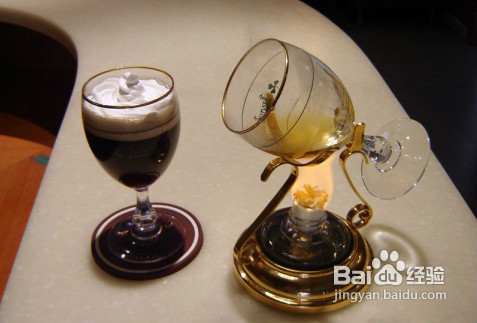The taste of Rwanda Malaba boutique coffee beans is usually quite light.
The watershed between the Congo basin and the Nile basin runs through Rwanda from north to south, with about 80 per cent of the country draining from the Nile and about 20 per cent from the Ruzi River and Lake Tanganyika. The longest river in the country is the Niabalongo River (Nyabarongo River) in the southwest, which turns north, east and southeast into the Ruwuwu River and forms the Kagera River, which flows due north along the eastern border of Tanzania. Both the Niabarongo River and the Cagella River will eventually flow into Lake Victoria. There are many lakes in Rwanda, of which Lake Kivu is the largest. The lake is located at the bottom of the Aberdeen Rift Valley and extends along the western border of Rwanda. With a maximum depth of 480 meters, it is one of the 20 deepest lakes in the world. Other larger lakes include Lake Burera, Lake Ruhondo, Lake Muhazi, Lake Rweru and Lake Ihema, of which Lake Aishma is the largest in a series of lakes in the eastern plains of Akagera National Park. [2]
Topography
There are many mountains in Rwanda, which is called "the country of a thousand hills". The whole country is at a high altitude: the lowest point, the Luzizi River, is also 950 meters above sea level. The Midwest is dominated by mountains, which are part of the Aberdeen Rift Valley, which is part of the East African Rift Valley, extending from north to south along the western border of Rwanda. The highest mountain in the country is located in the volcanic chain of the Virunga Mountains in the northwest, of which Calisin is 4507 meters higher than the volcano, which is the highest geographical point in Rwanda. The mountain area in the western part of the country, located in the Aberdeen Rift Mountain Forest Ecological region, is between 1500 and 2500 meters above sea level. The central part of Rwanda is dominated by rolling hills, while the eastern border is made up of savannas, plains and swamps.
Malaba Coffee grows in southern Rwanda, about 12 kilometers (7 miles) from the city of Butare and 150 kilometers (93 miles) from the capital, Gejali. The plan began in the Malaba area of Butare province, but was taken over by a local government organization in 2006, which is now part of the Huye district of the southern province. Due to its proximity to the East African Rift Valley and the Neuenway Forest Mountains, this zone is sloping, steep and has fertile volcanic soil. Coffee is grown at 1700 to 2100 m (5577-6889 ft) above sea level, usually with terraces on steep hillsides. The zone also has an average annual rainfall of 115 centimeters (45 inches). Most of them come from the rainy season from March to May, which is also the main coffee harvest season. The temperature at high altitude is slightly lower, with an average of about 20 °C (68 °F), which varies slightly due to seasons.
The biggest harvest season for Rwandan coffee is during the main rainy season, from March to the end of May. During the harvest season, farmers spend most of their day picking coffee fruits by hand. In the afternoon, farmers carry coffee fruits in traditional baskets made of banana leaves to a cleaning station a few hours away. The mechanic picks out the best quality crimson coffee fruit by hand and returns the remaining coffee fruit to the farmers and sells it at a low price in the market outside the Malabaga work area. The mechanic pays the farmer $0.10 per kilogram. The guild deposits the remuneration into the farmer's bank account every two weeks.
Rwanda has been growing coffee since colonial times. Although the crops are mainly coffee, the quality of coffee produced in Rwanda is not outstanding, and its status in the coffee world is low, and few people pay attention to it. Most of the coffee varieties grown in Rwanda are bourbon. Rwanda, known as the "country of a thousand hills", has a high-altitude mountain environment, fertile volcanic soil and abundant precipitation, and has a climate conducive to the growth of coffee trees. The advantages of varieties and excellent natural conditions should have produced high-quality coffee, but why the quality of its coffee performance is not satisfactory? The reason lies in the later stage of processing. Improper handling will reduce the quality of coffee and sacrifice a lot of good flavor in vain. Harvesting, planting, treatment, grading, transportation and other links will directly affect the quality of raw coffee beans, in which the lack of control in a certain link will become a stumbling block to good coffee.
The coffee fruit needs to be transported to the processing plant as soon as possible after picking, but due to the lack of domestic facilities, it is unable to deal with the fruit at the first time. The fruits are piled up after being picked, which will continue to develop and accelerate mildew and decay due to lack of ventilation. Rotten fruits will affect the quality of coffee and show defective flavor.
In recent years, Rwanda has made great progress in the production and processing of coffee. First of all, coffee fruits are picked manually; coffee production cooperatives are set up all over the country to provide technical guidance to coffee farmers; coffee farmers send them to coffee processing stations for cleaning and screening as soon as possible after picking, and select mature and high-quality coffee fruits for processing.

Important Notice :
前街咖啡 FrontStreet Coffee has moved to new addredd:
FrontStreet Coffee Address: 315,Donghua East Road,GuangZhou
Tel:020 38364473
- Prev

Colombia coffee with excellent quality and delicious taste
When news of Napoleon I's invasion of Spain reached Colombia in 1808, the people there immediately launched an independence movement. On July 20, 1810, Bogotá erupted in a massive uprising against Spanish colonial rule, arresting the governor of New Granada. In November 1811, representatives of the provinces organized a congress in Bogotá, and the United Provincial Government of New Granada was established and proclaimed on November 11.
- Next

The taste of Hawaiian coffee is moist and smooth. Introduction to the characteristics of fine coffee in the manor area.
The Hawaiian islands were first discovered in 1778 by European navigator James Cook. In 1795, the Hawaiian chief Kamehameha unified the entire Hawaiian islands and called himself King Kamehameha I of Hawaii, when European navigator Cook landed on the Hawaiian island of Oahu. In 1818, Kamehameha I envied the design of the rice flag of the British flag and put the flag of the Kingdom of Hawaii
Related
- Detailed explanation of Jadeite planting Land in Panamanian Jadeite Manor introduction to the grading system of Jadeite competitive bidding, Red bid, Green bid and Rose Summer
- Story of Coffee planting in Brenka region of Costa Rica Stonehenge Manor anaerobic heavy honey treatment of flavor mouth
- What's on the barrel of Blue Mountain Coffee beans?
- Can American coffee also pull flowers? How to use hot American style to pull out a good-looking pattern?
- Can you make a cold extract with coffee beans? What is the right proportion for cold-extracted coffee formula?
- Indonesian PWN Gold Mandrine Coffee Origin Features Flavor How to Chong? Mandolin coffee is American.
- A brief introduction to the flavor characteristics of Brazilian yellow bourbon coffee beans
- What is the effect of different water quality on the flavor of cold-extracted coffee? What kind of water is best for brewing coffee?
- Why do you think of Rose Summer whenever you mention Panamanian coffee?
- Introduction to the characteristics of authentic blue mountain coffee bean producing areas? What is the CIB Coffee Authority in Jamaica?

